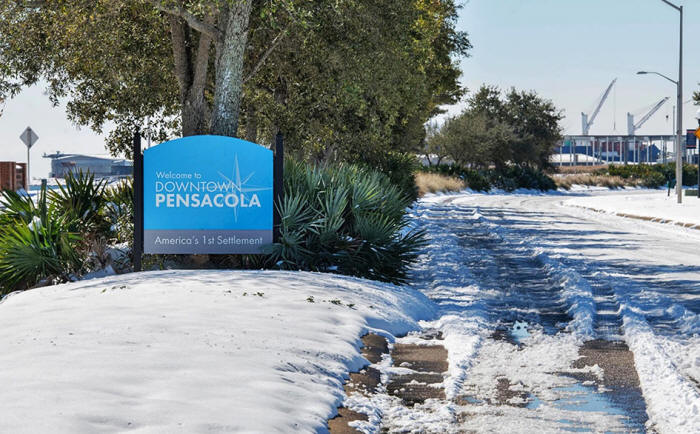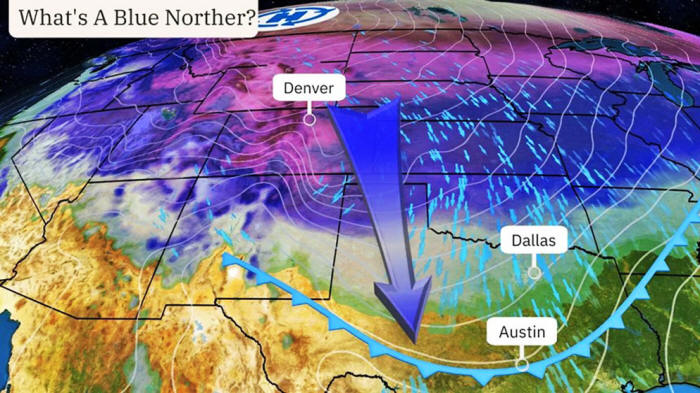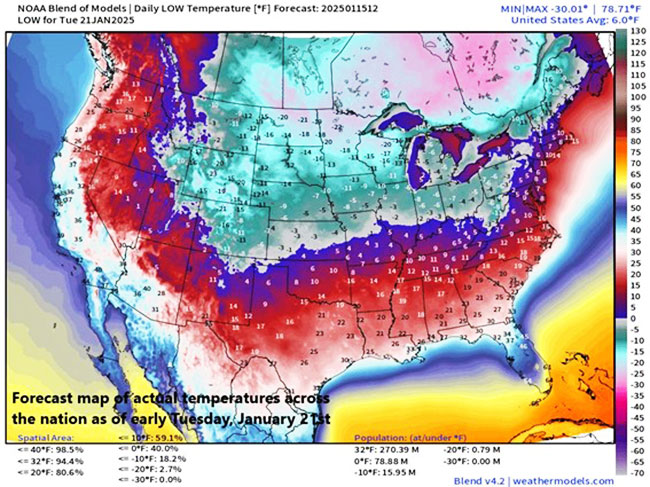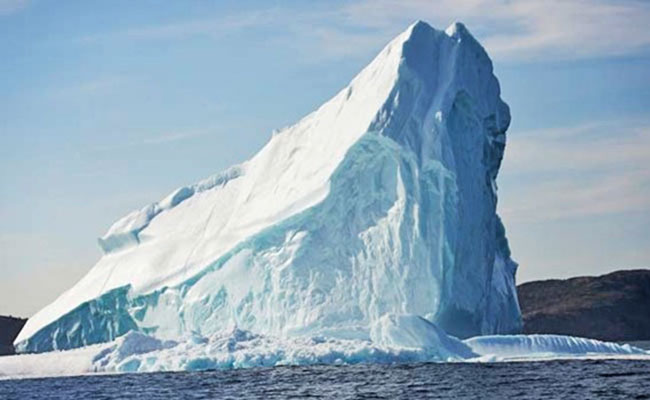|
by Dr. Mark Sircus
January 29, 2025
Peter Sinks, located just 20
miles northeast of Logan,
recorded a temperature of -55º
Fahrenheit on Monday night, solidifying its claim as one
of the coldest locations in the lower 48 United States.
It is impossible to imagine the world boiling these days, but not so difficult to imagine it freezing.
No matter what you call it,
...it is frigid air we are talking about.
You have to
have a high school education to understand this.
with a focus on the blue northern
affecting
Denver, Dallas, and Austin.
In these cases, one could go from wearing t-shirts and shorts outside to needing a winter jacket.
Blue Northers can move at forward speeds of 40 mph or faster, making the trip from the Canadian border to the Gulf of Mexico in less than two days.
Temperatures are touching 30 degrees below
normal, with historic blizzards blanketing the Gulf Coast and
paralyzing the region.
It was about uniform planetary warming for decades:
Real-world observations have refused to
cooperate, leaving hundreds of millions in the northern hemisphere
in the cold. It's more like a billion cold souls.
In Milton, Florida, 8.8 inches of snow have accumulated, setting a new all-time state record, more than doubling the 4 inches from March 1954. This is also considered the state's highest snow total in over two centuries since the blizzard of January 1800 (at least).
A total of 6.5 inches (and counting) has been posted at Pensacola, breaking the record there.
The standouts were probably Louisiana, with Acadia AP tanking to 6ºF (-14.4ºC), tying the record from Feb 13, 1899, and also Kansas, which had Topeka at -12ºF (-24.4ºC) Wednesday morning, pipping the daily record of -11ºF (-23.9ºC) set back in 1888.
And those were cold times.
The cold spilled down into Mexico and the
Caribbean. And U.S. Freeze, Part Two is coming as that 'polar
vortex' threatens to return to America in February.
NOAA daily low temperature forecast for the United States on January 21, 2025,
in degrees
Fahrenheit.
South Korea sees 4.25 feet of snow
in 2 days...
England on for
7th Coldest January since 1659
...the UK's Met Office has some explaining to do:
To Jan 14, the Central England Temperature (CET) record - the world's longest-running temperature dataset, dating back to 1659 - shows an average of just 2ºC.
This marks an anomaly of -1.8ºC below the
1960-1990 average (a cold era, by the way).
While many argue that the wildfires stem from climate change, an abundance of evidence suggests a more straightforward explanation:
Several residents in the area decided to risk
$150 fines (the penalty for removing brush from state parklands
without a license) and removed the highly flammable brush on their
own.
symbolizing climate change concerns
and a potential
new ice age.
Starting in the early 14th Century,
average temperatures in the British Isles cooled by 2°C, with
similar anomalies recorded across Europe.
Indeed, studies of the past million years
indicate a repeatable cycle of Earth's climate going from warm
periods ("interglacial", as we are experiencing now) to glacial
conditions.
has reported freezing lows of 0°C (32°F)
- a rare occurrence for
the tropical region.
The theory that orbital shifts caused the waxing and waning of ice ages was first pointed out by James Croll in the 19th Century and developed more fully by Milutin Milankovitch in 1938.
The harsh weather has caused significant
transport disruptions, with rail services and flights cancelled.
Many business are also closed, and local authorities have moved
schools to distance learning as a precaution.
The move reflects Trump's skepticism about global warming, which he has called a hoax, and fits in with his broader agenda to unfetter U.S. oil and gas drillers from regulation so they can maximize output.
The grid spans from Washington, D.C., to Illinois and is preparing for energy use to approach levels not seen in a decade+.
The Eastern U.S. is experiencing dangerously low temperatures, prompting PJM to issue a maximum generation alert.
This move allows the operator to curtail electricity exports to neighboring grids to maintain reliability.
The country's reckless pursuit of unreliable renewables and its ill-conceived decision to phase out nuclear power has left it vulnerable to energy shortages.
Wind and solar, touted as the panacea for Germany's energy needs, falter precisely when they are needed most - during long, frigid winters when the sun is scarce and the winds are still.
Instead of a robust, diversified energy strategy,
Germany, like most Western economies, bowed to the whims of
fanatics, betting on intermittent sources that consistently fail to
deliver.
Last week's collapse in wind power generation underscores the folly of relying on something as fickle as the weather for a critical resource:
Output tanked to less than 1% of the country's supply due to an atmospheric lull - a "dunkelflaute" - and exposed the UK's energy policy as disastrously short-sighted.
The UK's 12,000 wind turbines, touted as the backbone of a green revolution, produced 200 megawatts at their lowest point - less than 2% of their capacity.
Winter demand in the UK is around 50GW.
|





